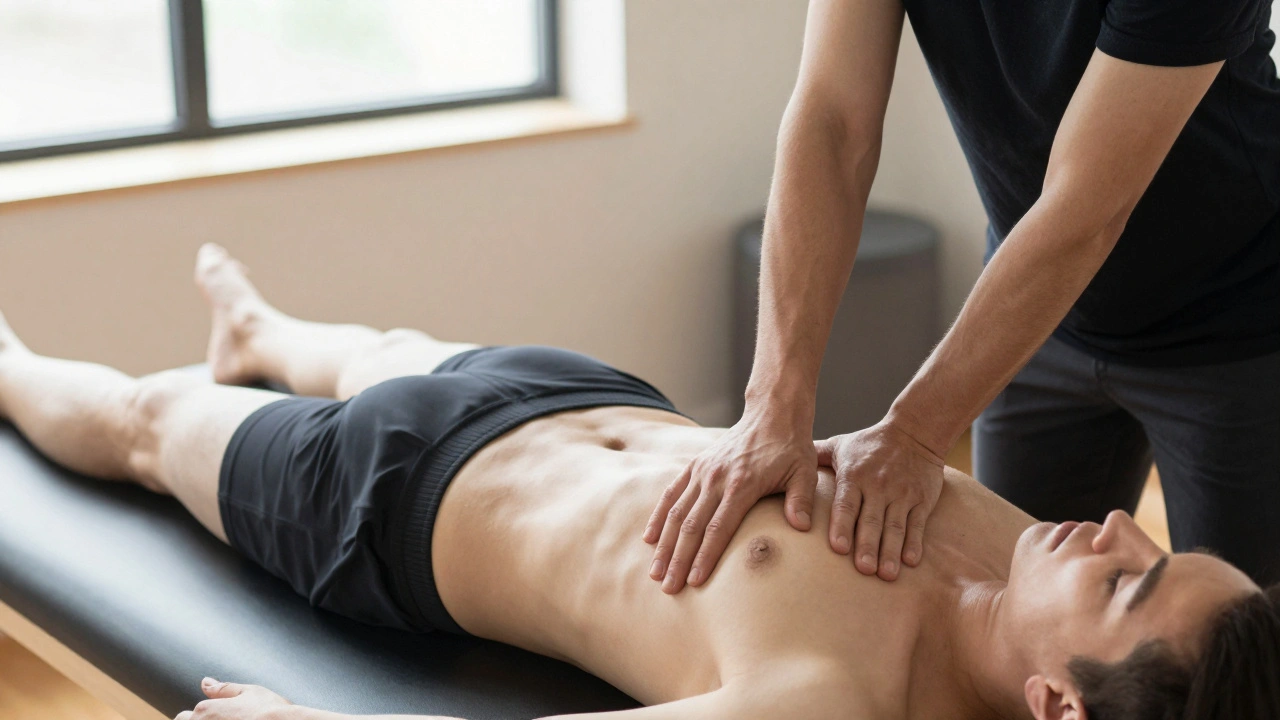Posture Improvement: Simple Steps, Therapies, and When to Get Help
Bad posture drains energy, makes you look tired, and starts small aches that grow. The good news: clear, practical changes and targeted bodywork can reverse this. Below are quick fixes, daily habits, and therapies worth trying so you stand taller and move with less pain.
Start with awareness. Do a quick wall test: heels, butt, shoulders and head touching the wall is ideal. If your head hits forward, practice chin tucks — gently draw the chin back and hold five seconds, repeat 10 times, three times a day. Add scapular squeezes: pinch shoulder blades together for five seconds, 10 reps, twice daily. These two moves wake the correct muscles without overdoing it.
Loosen tight areas that pull you out of alignment. Trigger point massage, amma or stone therapy ease tight neck and chest muscles that round your shoulders. Use a tennis ball against a wall to work the upper back for two minutes each side. Try basic acupressure points for neck tension by pressing the base of the skull for 30 seconds while breathing slowly.
Strength matters too. Weak mid-back and glutes let the front of the body collapse. Three simple strength moves: bird-dog (10 reps each side), glute bridges (3 sets of 12), and rows with a band (3 sets of 15). Do them three times weekly. Small, consistent loading builds the muscles that actually hold you upright.
Hands-on therapies speed change when self-care stalls. Feldenkrais and Hellerwork focus on movement awareness and structural alignment so posture shifts feel natural. Rolfing or structural integration can reorganize deeper connective tissue and often helps stubborn spinal patterns — many people with scoliosis report less pain after guided sessions. Ortho-Bionomy, myofascial work, and blind massage offer gentle ways to rebalance posture without aggressive pressure.
Choose a therapist who listens and explains the plan. Ask about training, how long sessions last, and typical results. Look for certified Hellerwork or Rolfer credentials, or a licensed massage therapist experienced with trigger point work. Expect gradual change over several sessions, not instant fixes. Keep a simple tracker: pain level, mobility, and posture photos every two weeks to measure real progress now.
When should you see a doctor? If you have sharp nerve pain, sudden weakness, numbness, or loss of bladder control, seek medical care right away. For long-standing stiffness, procedures like contractural tendon release are options after conservative care fails, but they’re for specific conditions, not everyday posture fixes.
Make it routine. Set hourly reminders to check your posture, use an ergonomic chair, and keep screens at eye level. Sleep on a pillow that supports neutral neck alignment and avoid sleeping on your stomach. Combine twice-monthly professional sessions with daily micro-practices and a weekly strengthening plan.
Try this two-week plan: week one—daily awareness drills and three strength sessions; week two—add self-massage and one professional bodywork session. Track pain levels and mobility; small wins each day add up fast. You don’t need perfect posture overnight, just steady, smart steps.

Unleashing the Power of Rolfing for Body Balance
Rolfing realigns your body by releasing fascial restrictions to restore natural posture and movement. Unlike temporary fixes, it creates lasting structural change through a 10-session series focused on whole-body balance.

Improve Your Posture with Amma Massage
Hello everyone, this post is about the wonders of Amma Massage on improving your posture. Here's a little secret, it's a traditional Japanese technique that stimulates pressure points. I'm going to dive deep into how it can holographically affect our body, aligning us into a better posture. We'll talk about the benefits, procedure, and its holistic approach in promoting overall wellness. Come join me in exploring this age-old wisdom that can bring us back to balance!
Categories
- Health and Wellness (148)
- Alternative Therapies (86)
- Massage Therapy (40)
- Travel and Culture (15)
- Beauty and Skincare (9)
- Holistic Health (8)
- Health and Fitness (5)
- Spirituality (5)
- Other (2)
- Personal Development (2)



